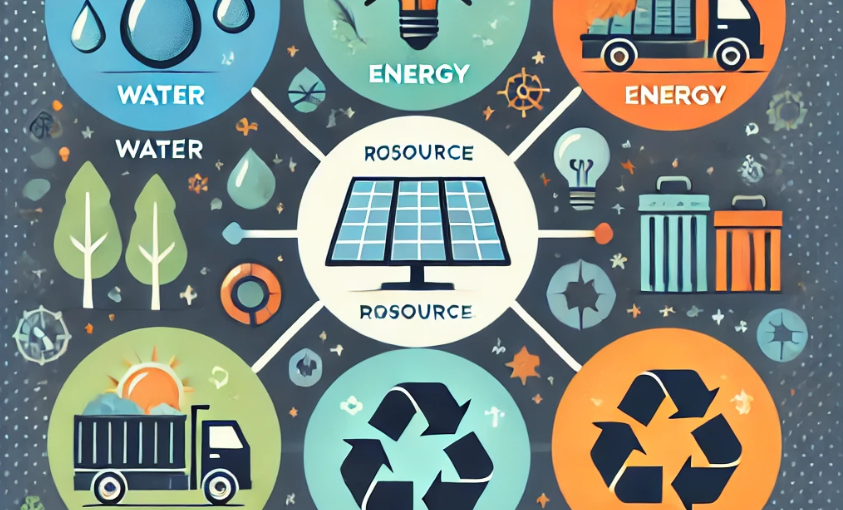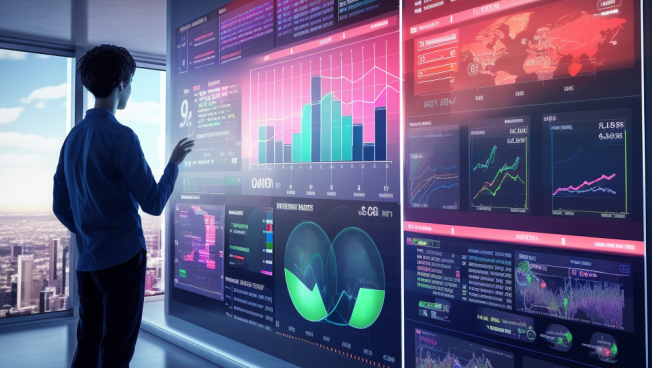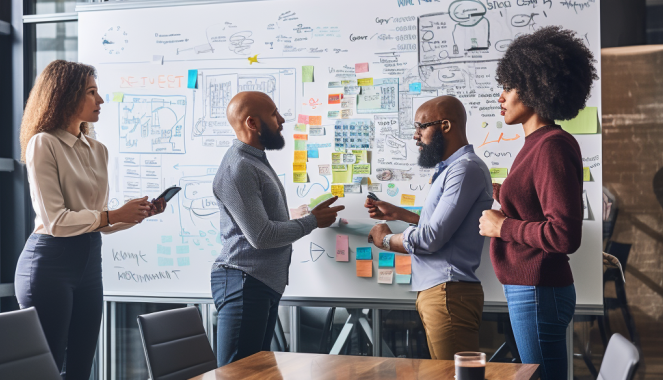In today’s business landscape, sustainability is no longer a buzzword – it’s a critical factor for long-term success. As companies strive to balance profitability with environmental and social responsibility, the concept of sustainable business models has gained significant traction. At the heart of these models lies a crucial element: the strategic management of key resources.
Understanding Key Resources in a Sustainable Context
To grasp the full potential of sustainable business models, it’s essential to first understand the fundamental resource categories that drive business operations. Traditionally, these have been classified into four main groups:
- Physical Resources: These tangible assets include buildings, equipment, raw materials, and infrastructure.
- Human Resources: The workforce, including employees, contractors, and their collective skills and knowledge.
- Intellectual Resources: Intangible assets such as patents, copyrights, brands, and proprietary information.
- Financial Resources: Capital, investments, and other monetary assets that fuel business operations.
However, in the context of sustainability, a fifth category has emerged:
Eco-Social Resources: This encompasses natural capital (environmental resources), social capital (community relationships), and cultural capital (shared values and norms).
The Interdependence of Resources in Sustainable Business Models
One of the key insights in developing sustainable business models is recognizing the interconnectedness of these resource categories. For instance, investing in human resources through sustainability training can lead to innovations in physical resource management, ultimately impacting financial resources positively.
Let’s delve deeper into each resource category and explore how they contribute to sustainable business models:
Physical Resources: The Foundation of Sustainable Operations
In sustainable business models, physical resources are managed with a focus on efficiency, renewability, and circularity. This approach goes beyond mere cost-cutting; it’s about reimagining how materials and assets are sourced, used, and repurposed.
Key strategies include:
- Embracing renewable materials and energy sources
- Implementing circular economy principles to minimize waste
- Optimizing supply chains for sustainability
- Investing in energy-efficient infrastructure and equipment

Case Study: Interface, a global commercial flooring company, has revolutionized its use of physical resources. By implementing a closed-loop system, they’ve significantly reduced virgin material use and waste, while also developing innovative products made from recycled and bio-based materials.
Human Resources: The Drivers of Sustainable Innovation
People are at the core of any successful sustainable business model. Companies that prioritize employee well-being, diversity, and sustainability-focused skill development are better positioned to drive innovation and adapt to changing market demands.
Key focus areas include:
- Sustainability training and education programs
- Fostering a culture of innovation and environmental responsibility
- Implementing fair labor practices and promoting diversity
- Encouraging employee engagement in sustainability initiatives
Intellectual Resources: Catalysts for Sustainable Solutions
In the pursuit of sustainability, intellectual resources play a crucial role. Patents, proprietary technologies, and innovative business processes can provide a competitive edge while addressing environmental and social challenges.
Strategies for leveraging intellectual resources include:
- Investing in R&D for sustainable technologies and processes
- Protecting and monetizing sustainability-related intellectual property
- Engaging in open innovation and collaborative research initiatives
- Developing data-driven sustainability metrics and reporting systems
Financial Resources: Fueling the Transition to Sustainability
While the transition to sustainable business models often requires significant upfront investment, it can lead to long-term cost savings and new revenue streams. Moreover, the growing field of sustainable finance offers innovative funding options for eco-friendly initiatives.
Key considerations include:
- Accessing green bonds and sustainability-linked loans
- Exploring Impact Investing Opportunities
- Implementing internal carbon pricing mechanisms
- Developing products and services that cater to sustainability-conscious consumers
Eco-Social Resources: The Often Overlooked Pillar of Sustainability
Eco-social resources, though less tangible, are increasingly recognized as critical to long-term business success. These resources encompass the natural environment, community relationships, and shared cultural values that support sustainable operations.
Strategies for managing eco-social resources include:
- Implementing biodiversity conservation programs
- Engaging in community development initiatives
- Preserving and promoting cultural heritage
- Building strong stakeholder relationships based on trust and transparency
Leveraging Technology for Resource Optimization
In the digital age, technology plays a pivotal role in optimizing resource management for sustainability. From artificial intelligence to blockchain, emerging technologies offer unprecedented opportunities to enhance efficiency and transparency across all resource categories.
Key technological applications include:
- AI-powered predictive maintenance to extend equipment lifespan
- IoT sensors for real-time resource consumption monitoring
- Blockchain for transparent and sustainable supply chain management
- Big data analytics for identifying sustainability improvement opportunities
Case Studies: Sustainable Resource Management in Action
- Patagonia: This outdoor clothing company has mastered the art of sustainable resource management. Their “Worn Wear” program encourages customers to repair and recycle clothing, extending product lifecycles and reducing waste. They’ve also invested heavily in sustainable materials research and transparent supply chain practices.
- Unilever: Through its Sustainable Living Plan, Unilever has demonstrated how comprehensive resource management can drive business growth. They’ve reduced waste and water use in manufacturing, sourced sustainable agricultural materials, and developed products that require less water and energy to use.
- Tesla: Beyond its electric vehicles, Tesla’s approach to intellectual and physical resources sets it apart. Their open-source patent strategy has accelerated industry-wide innovation in electric vehicle technology, while their Gigafactories showcase cutting-edge sustainable manufacturing practices.
The Road Ahead: Embracing Holistic Resource Management
As businesses navigate the complexities of sustainability, a holistic approach to resource management is crucial. This involves:
- Conducting comprehensive resource audits
- Setting clear, measurable sustainability goals
- Implementing integrated resource management systems
- Regularly reviewing and adapting strategies based on performance and emerging trends

Premier Pitch Deck Consultants can play a vital role in helping businesses articulate their sustainable resource management strategies to investors and stakeholders, ensuring that these critical initiatives receive the support they need to succeed.
Conclusion: The Future of Sustainable Business Models
The journey towards truly sustainable business models is ongoing, with resource management at its core. By reimagining how they utilize, conserve, and regenerate resources across all categories, companies can not only reduce their environmental impact but also unlock new opportunities for innovation, efficiency, and growth.
As we look to the future, it’s clear that the most successful businesses will be those that view sustainability not as a constraint, but as a catalyst for positive change. By mastering the art of sustainable resource management, companies can build resilient, future-proof business models that create value for all stakeholders – including the planet itself.








